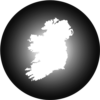Irish Go Association

Founded back in the heady days of 1989, you can find full details of our activities on our ![[ext]](images/extlink.gif) website.
website.
For an overview of IGA History you can look ![[ext]](images/extlink.gif) here, but we hope to have a consolidated history page in place soon. There is also
here, but we hope to have a consolidated history page in place soon. There is also ![[ext]](images/extlink.gif) this account.
this account.
We have clubs in Belfast, Lisburn, Cork, Cobh, Dublin and ![[ext]](images/extlink.gif) Galway.
Galway.
The European Go Congress was held in Dublin in 2001. You can read a visitor's ![[ext]](images/extlink.gif) travel journal, and also browse the history category of the Irish website to find more information, for instance, John Gibson
travel journal, and also browse the history category of the Irish website to find more information, for instance, John Gibson![[ext]](images/extlink.gif) 's diary.
's diary.
The Irish Open takes place each year around March, and individual clubs also run tournaments.
The IGA also organises an annual Irish championship, correspondence competitions, and various other tournaments and activities.
On KGS there is an Ireland room under the national category. On OGS there is an ![[ext]](images/extlink.gif) Ireland group
Ireland group
The IGA has a ![[ext]](images/extlink.gif) newsletter to keep up with local Go news, to subscribe there is a form or email directly to newsletter at irish go dot org. [1] Other ways to keep up with the local gossip include the
newsletter to keep up with local Go news, to subscribe there is a form or email directly to newsletter at irish go dot org. [1] Other ways to keep up with the local gossip include the ![[ext]](images/extlink.gif) discussion group and the
discussion group and the ![[ext]](images/extlink.gif) facebook page
facebook page
Logo
For anyone who is interested, the IGA has used at various logos over the course of its history. The early newsletters featured a simple kanji for Go. After a time a simple design of a joseki overlayed on the background of a map of Ireland was used. This design originated for something like the Fujitsu Grand Prix and was printed onto kifu for the event (Either Olivier Deme or John Gibson were responsible). It also appeared on the IGA website from January 2008. Around 2009 the then IGA President, Ian Davis, commissioned Suk Choi to do a new logo. This design wasn't universally liked, and was replaced around 2020.



![Sensei's Library [Welcome to Sensei's Library!]](images/stone-hello.png)